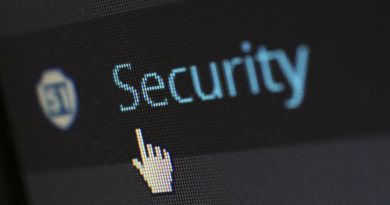The Challenge of Zero Touch and Explainable AI
Abstract: With ever increasing complexity and dynamicity in digital service provider networks, especially with the emergence of 5G, operators seek
Read More
Abstract: With ever increasing complexity and dynamicity in digital service provider networks, especially with the emergence of 5G, operators seek
Read More
A few weeks ago, an article on the new CIS 18 framework was published on this site. CIS is one of the go to frameworks for security assessments, but the cloud has its own set of controls and a framework developed by the Cloud Security Alliance (CSA). They have recently released a new version of their framework as well. This article will introduce the CSA and its security framework.
Read More
Recent high-profile ransomware and cyberattacks expose vulnerabilities in commercial buildings that are far too widespread. In fact, the same headline-making exposures of late can be faced by any company that uses operational technology (OT) and information technology (IT).
Smart leaders across the nation and around the world should be thinking: “Maybe it could happen here.” The question becomes how to prevent similar attacks and how to position your organization to meet upcoming cybersecurity mandates with wide-ranging implications. Those of us in the cybersecurity business are aware of many such incidents, including some stories from my experience.

When it comes to protecting your organisation from cyber-attacks, threat detection can play a critical role in your overall defence strategy. Primarily this is because the earlier you can detect a threat, the earlier you can mitigate it and stop it turning into an attack. A well-executed threat detection capability can also pre-empt attacks before they occur based on a single network log.
Read More
Less than a month ago, President Biden released his proposed budget for Fiscal Year 2022 that includes $9.8 billion in funding for cybersecurity enhancements. Cyberbreaches are making the headlines too often – almost on a weekly basis – and those are only the attacks that are reported. Not only are the breaches costly, but they also are dangerous. Potential threats to public safety as a result of cyberbreaches, in fact, are daunting. The Administration has made it clear that the Federal government intends to provide as much protection to the nation’s overall infrastructure as possible.
Read More
Smart factories, smart sensors, and the Internet of Things are blurring the line between digital and physical worlds — making
Read More
There is a broad range of cloud security services on the market with varying functionality. Anurag Kahol, CTO at Bitglass, takes a look the issues caused when uptime and performance of such services are compromised, and argues that true cloud security should be delivered from the cloud itself.
Read More
In May 2021, CIS launched a new version of their controls, version 8.
The CIS controls are a set of actionable controls recommended to help organisations defend against cyber attacks. Tom Madsen takes a look at the differences between this version and the previous, and how the controls better align to current world cyber threats.

5G networks are becoming a key part of our critical infrastructure, enabling wireless networking in a broad range of scenarios from mobile broadband to massive IoT. Until recently though there has only been moderate noticeable output by national regulators on the specific security risks 5G systems are subject to.
Cybersecurity Magazine takes a look at the efforts made by the EU and its “Toolbox” to better realize guidance beyond industry standards and ensure a common security baseline at scale.

Ransomware attacks can have major impacts for both companies and their customers if successful, and the rate of attack is only increasing. Tom Madsen argues the need to limit the amount of data that is collected and stored long term to help to minimize the risks of a successful ransomware attack.
Read More